The aroma of vanilla-kissed French toast sizzling on the griddle reminds me of Sunday mornings in my grandmother’s kitchen. Many people claim they have the best French toast recipe. I’ve spent years perfecting my grandmother’s signature version that creates golden-brown slices with crispy edges.
My grandmother’s cherished French toast recipe goes well beyond simple bread and egg mixture. Her secret combines both technique and a special vanilla addition that turns ordinary breakfast into something magical. I want to share the ingredients, steps and my grandmother’s hidden tips that make this recipe exceptional. You’ll discover everything from selecting the perfect bread to the ideal soaking time needed to create this beloved breakfast classic.
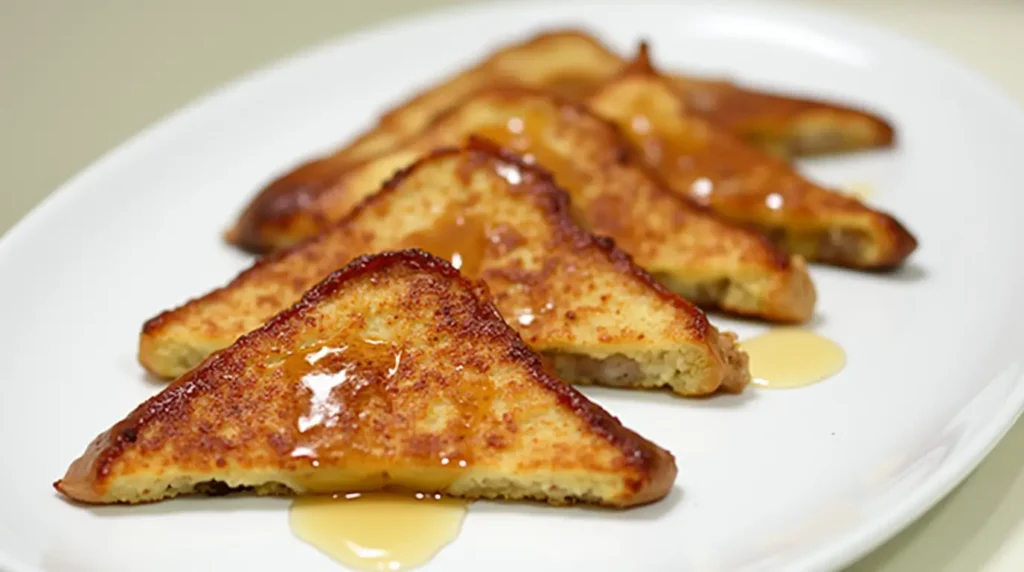
Table of Contents
The Story Behind Grandma’s Famous French Toast recipe
My earliest memories of making French toast recipe take me back to my grandmother’s cozy kitchen. The morning light would stream through lace curtains as she shared her culinary wisdom. This cherished breakfast dish means much more than just a recipe to our family—it’s a tradition that connects us to our roots.
A cherished family tradition
My grandmother would wake up before dawn every weekend to prepare her signature French toast recipe. She taught me the best French toast recipe needs patience and precision, not just ingredients. She always said quality ingredients make all the difference, especially the right bread.
How the recipe evolved over generations
French toast has a rich history that started way before it reached our family kitchen. The first recipe showed up in a fourth-century Roman cookbook as “aliter dulcia.” The dish took different forms as it spread through cultures:
- Germans called it “arme ritter” (poor knights) in the fourteenth century
- The French named it “pain perdu” (lost bread)
- By 1660, “French toast” appeared in English cookbooks
The vanilla secret revealed
My grandmother’s recipe stands out because of her generous use of vanilla extract. This simple ingredient turns ordinary French toast into something magical. She always said vanilla works like a spice that boosts sweetness, just like salt brings out savory flavors.
Her vanilla technique goes beyond just adding a splash—it creates the perfect custard-like base. The vanilla extract lifts the cream and egg mixture into something that tastes like sweet custard. This special touch makes our family’s version unique.
This recipe shines through its simple yet thoughtful approach. I’ve found that vanilla adds more than flavor—it creates a floral, warming quality that makes each bite special. This secret ingredient has become our family’s signature, passed down through generations. It makes every breakfast feel like a celebration.

Essential Ingredients for Perfect French Toast recipe
Let me share the key ingredients that make this French toast recipe truly special. Years of practice taught me that picking the right components turns an ordinary breakfast into an extraordinary morning treat.
Choosing the right bread
Perfect French toast starts with the right bread. Here are my recommended premium options:
- Brioche: Its buttery, tender crumb makes it ideal to soak up custard
- Challah: The egg-based texture creates a perfect foundation
- French bread: Works best when cut into thick slices
Day-old bread works best because it soaks up the custard mixture beautifully. Fresh bread needs to dry in a 300-degree oven for 15-20 minutes.
The vanilla enhancement technique
My family’s signature French toast has a secret in its vanilla preparation. Pure vanilla extract creates a richer and more complex flavor profile. I found that vanilla naturally boosts the sweetness, a technique I learned from my grandmother.
Quality matters: selecting other ingredients
The right ingredients can raise our French toast recipe to new heights:
- Eggs: Large eggs provide the ideal yolk-to-white ratio
- Dairy: Half-and-half creates the perfect balance, though whole milk works well for a lighter version
- Maple Syrup: Real maple syrup is a must – don’t compromise here
The perfect custard mixture needs a precise ratio. Use four eggs for every one cup of milk. Room temperature eggs and dairy blend more smoothly together.
Thick-cut bread slices, about 1/2 inch or thicker, give the best results. This thickness helps the bread soak up just enough custard without getting soggy. The end result should be crispy outside with a creamy, custardy center.
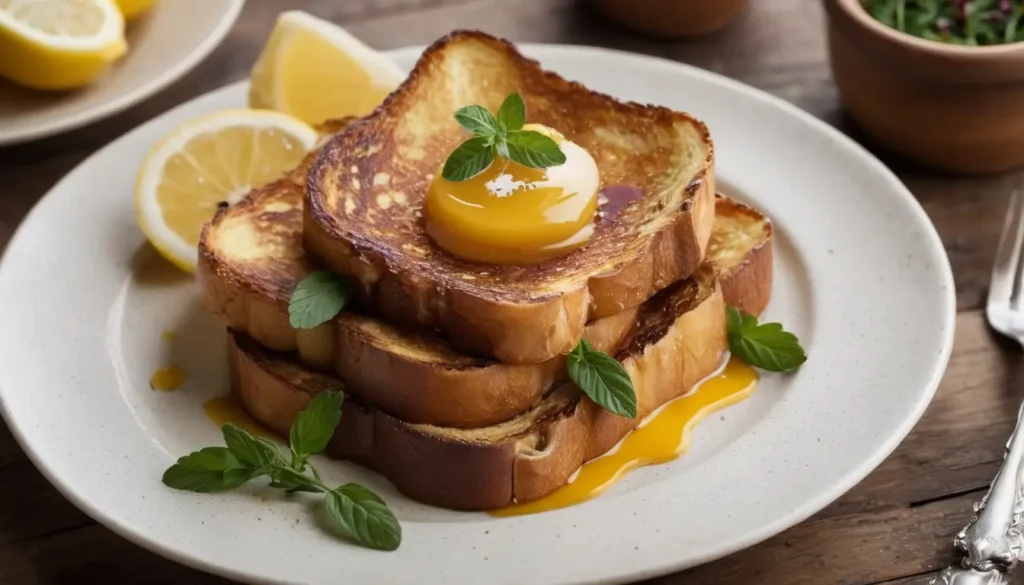
Mastering Grandma’s Signature Technique
I’m excited to share the exact techniques that make this French toast recipe exceptional after mastering the ingredients. These methods come from years of Sunday morning practice in my grandmother’s kitchen.
The perfect soaking method
The quickest way to perfect French toast recipe starts with the right soaking technique. Thick, dense slices like brioche need up to a few minutes per side. Regular white bread needs just one minute per side. You’ll know it’s ready when the bread feels heavy and saturated but still holds its structure.
Temperature control secrets
The right temperature will give you perfect French toast recipe. The ideal range sits between 325°F and 350°F. Here’s my tested process:
- Preheat the pan or griddle for 5-10 minutes
- Use a mixture of butter and neutral oil to prevent burning
- Keep medium to medium-low heat throughout cooking
- Lower the heat if bottoms brown too quickly
Achieving the golden-brown crust
That perfect golden-brown crust needs careful timing and technique. Each slice takes about 3-4 minutes per side. Look for these signs:
- Deep golden-brown color on both sides
- Crispy exterior with slight resistance when touched
- Custard-like interior that’s fully set
Medium-low heat is the secret to preventing sogginess. This temperature lets the inside become custard-like while creating a beautiful crust. In fact, soggy French toast usually means the cooking temperature was too low or the bread soaked too long.
My grandmother taught me a clever trick – add a small amount of cornstarch to the batter. This creates an even crispier exterior while keeping that tender, custard-like interior. We focused on achieving that perfectly golden-brown finish.
The pan should never be overcrowded. Each slice needs enough space to develop that signature crispy exterior. The perfect French toast recipe should have a beautifully caramelized exterior that gives way to a creamy, tender center – exactly how my grandmother made it.
Common French Toast Mistakes to Avoid
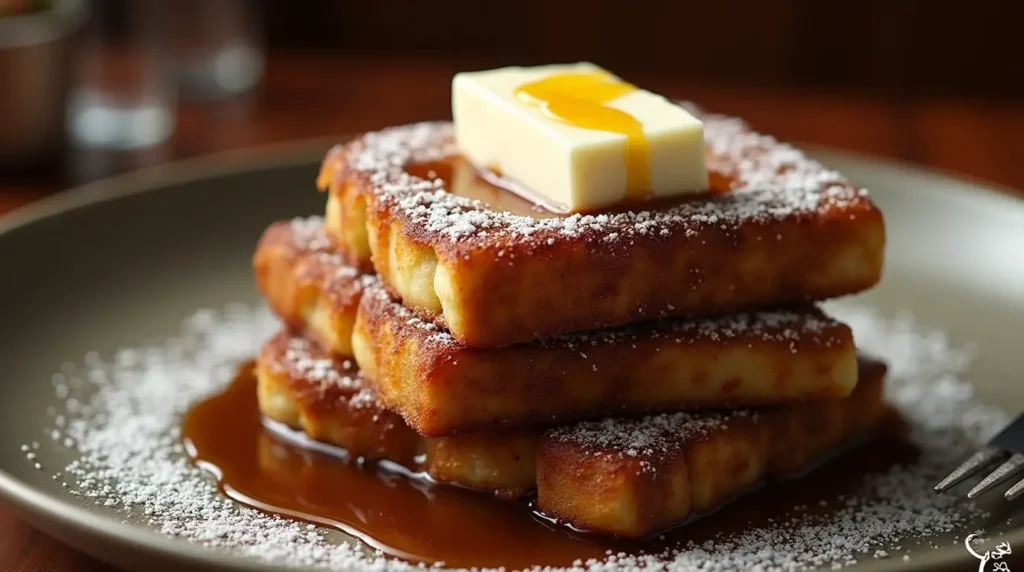
I’ve made this beloved breakfast dish for years and found many ways things can go wrong when making French toast recipe. Let me share the most common mistakes and how to fix them so you can get great results every time.
Why your french toast recipe gets soggy
Your French toast might turn soggy because the dairy-to-egg ratio isn’t right. Too much dairy stops the eggs from cooking well, which leaves you with wet, soggy bread. Here’s what really works:
- Four eggs for every cup of milk
- Half-and-half or heavy cream works better than regular milk
- A pinch of salt improves the flavors
Temperature troubleshooting
Getting the temperature right can make or break your French toast recipe. Your toast will burn on the outside and stay raw in the middle if the heat is too high. Here’s what works best:
- Get the pan really hot before you start
- Keep it at medium heat (around 250°F)
- Give each side 3-4 minutes
- Mix butter and oil to stop the toast from burning
Fixing batter consistency issues
The perfect batter starts with good mixing. People often don’t whisk the custard enough, and that’s why you see those egg white spots on the finished toast.
Let the bread soak for 15-20 minutes. In spite of that, different types of bread need different soaking times. You’ll know it’s ready when the bread feels heavy and wet but doesn’t fall apart.
I found that adding a bit of flour to the batter changes everything. This simple trick helps mix the liquids better and creates a traditional batter that keeps the toast from getting soggy. You’ll get that crispy outside while the inside stays soft and fluffy.
Note that your pan needs to be hot enough – a cool pan will let the custard spread out and create an ugly “foot” at the bottom of your toast. The pan is ready when your batter starts cooking as soon as it hits the surface.
These tested solutions will help you make perfect French toast recipe every time. My troubleshooting tips will guide you to that golden-brown exterior and custardy interior that makes this breakfast favorite so special.
Creative Serving Suggestions
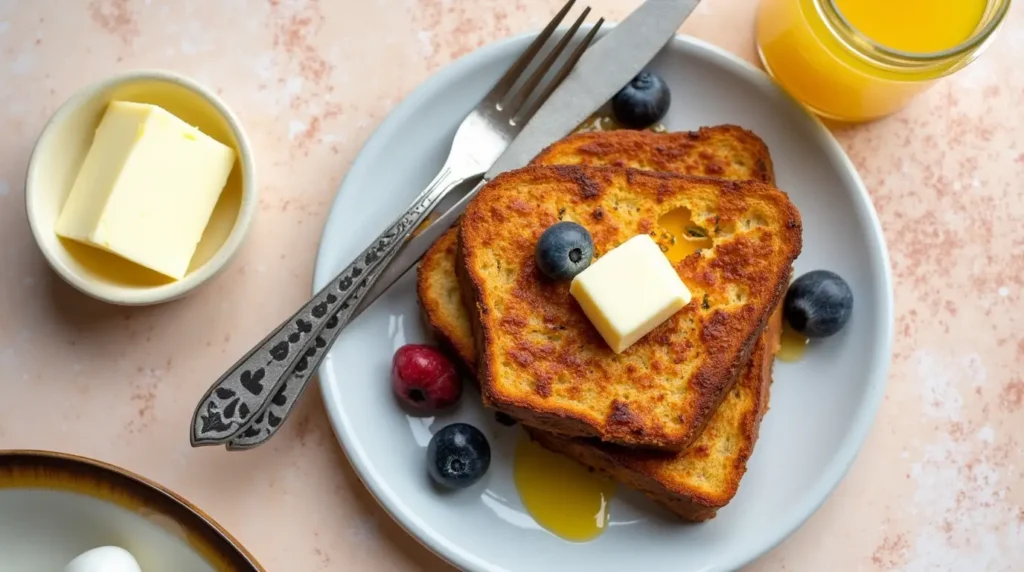
We’ve become skilled at making the perfect French toast. Let’s explore some exciting ways to raise this breakfast favorite with creative toppings and sauces that make every bite memorable.
Traditional toppings with a twist
I love giving classic toppings an unexpected spin to create extraordinary flavor combinations. One of my favorite finds is pairing Greek yogurt with orange slices and maple syrup. This creates a delightful balance of tangy and sweet notes. A scoop of French vanilla ice cream topped with fresh berries makes it truly indulgent.
The brown sugar and lemon juice pairing is remarkable. The brown sugar melts slightly and creates a delicious syrup that changes ordinary French toast into something extraordinary. We used about two tablespoons of brown sugar per slice, followed by a generous drizzle of fresh lemon juice.
Seasonal fruit combinations
My toppings change with the seasons. Here’s my favorite seasonal fruit pairings:
- Spring: Fresh strawberries with mint and a sprinkle of sea salt
- Summer: Peaches with warm custard and whipped cream
- Fall: Cinnamon-spiced apples with cardamom
- Winter: Pomegranate seeds with honey drizzle
Two cups of diced seasonal fruit per serving creates the perfect fruit-to-toast ratio. Bananas and stone fruits taste better when simmered with honey and fragrant spices first.
Grandma’s special sauce recipes
The right sauce can turn homemade French toast recipe from good to exceptional. My grandmother’s cinnamon sauce recipe combines sweetened condensed milk with ground cinnamon. This rich, warm topping perfectly complements the vanilla-infused bread.
Our family’s brown sugar lemon sauce is special. Here’s how to make it:
- Spread brown sugar evenly over the warm toast
- Drizzle fresh lemon juice over the sugar
- Allow it to sit briefly, letting the lemon juice dissolve the sugar
- Watch as it changes into a perfect syrup
A salted butter caramel sauce pairs beautifully with red fruits. This sweet and salty combination creates an irresistible contrast that enhances the whole dish.
Egg muffins or crispy bacon make great protein-rich sides that create a sweet and savory experience. Our family can’t resist the maple syrup and bacon combination.
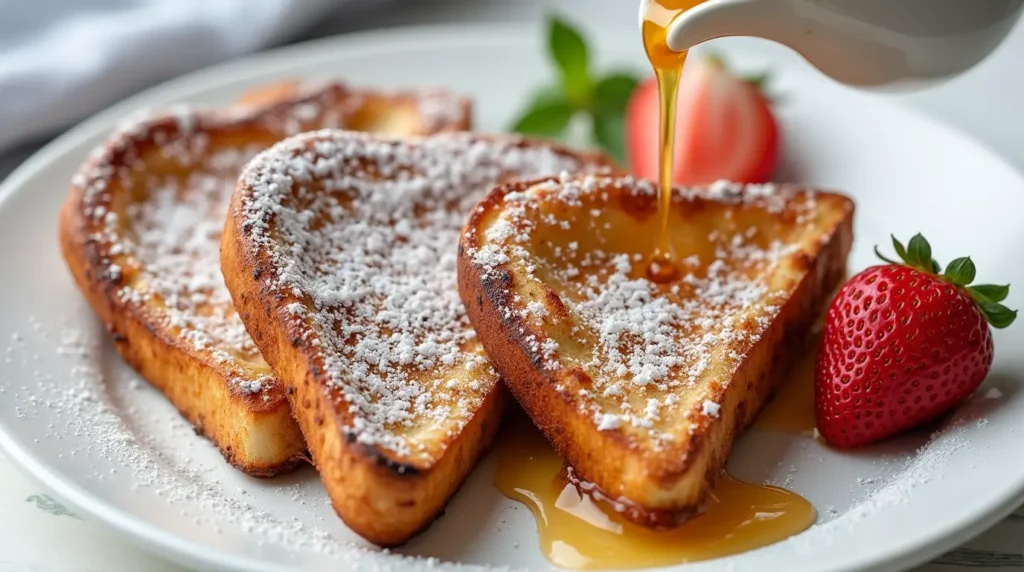
Conclusion
Creating perfect French toast recipe requires attention to detail. My grandmother’s trusted recipe makes the process simple and rewarding. Quality ingredients, proper soaking techniques, and temperature control will help you create this beloved breakfast classic at home.
A secret touch of vanilla turns ordinary French toast recipe into an extraordinary morning treat. Seasonal toppings and special sauces add endless variety to this dish. My family still gathers around this cherished recipe and creates new memories with each batch of golden-brown, perfectly crispy slices.
Note that practice guides you to perfection. Your first attempt might not match my grandmother’s masterpiece, but each try brings you closer to breakfast excellence. Quality ingredients and simple techniques will help you develop your signature touches. You can find more recipe ideas and breakfast inspiration at recipesnutritious.com.
The joy of making French toast should shine through in every batch. This recipe provides a delicious foundation for countless breakfast possibilities, whether you prefer classic maple syrup or experiment with creative toppings. My grandmother taught me that true magic happens when you share these special moments with loved ones around your kitchen table.
FAQs
Q1. What’s the secret to making perfect French toast? The secret lies in using quality ingredients, especially the right bread, and mastering the soaking technique. Use day-old bread like brioche or challah, and soak it in a custard mixture enhanced with vanilla extract. Cook on medium heat for a golden-brown exterior and custardy interior.
Q2. How can I prevent my French toast from becoming soggy? To avoid soggy French toast, maintain the right dairy-to-egg ratio (about 1/4 cup liquid to one egg) and don’t oversoak the bread. Cook on medium heat to allow the inside to set while the outside becomes crispy. Adding a small amount of flour to the batter can also help prevent sogginess.
Q3. What’s the ideal temperature for cooking French toast? The ideal temperature range for cooking French toast is between 325°F and 350°F. Preheat your pan or griddle for 5-10 minutes, and maintain medium to medium-low heat throughout cooking. This ensures a crispy exterior while allowing the inside to cook properly.
Q4. How long should I soak the bread for French toast? Soaking time depends on the bread type. For thick, dense slices like brioche, soak for up to a few minutes per side. For regular white bread, one minute per side is sufficient. The bread should feel heavy and saturated but still maintain its structure.
Q5. What are some creative ways to serve French toast? Get creative with toppings and sauces! Try seasonal fruit combinations, like strawberries with mint in spring or cinnamon-spiced apples in fall. Make special sauces like cinnamon sauce using sweetened condensed milk and ground cinnamon, or a brown sugar lemon sauce. For a twist, serve with a scoop of vanilla ice cream and fresh berries.
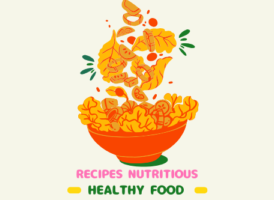
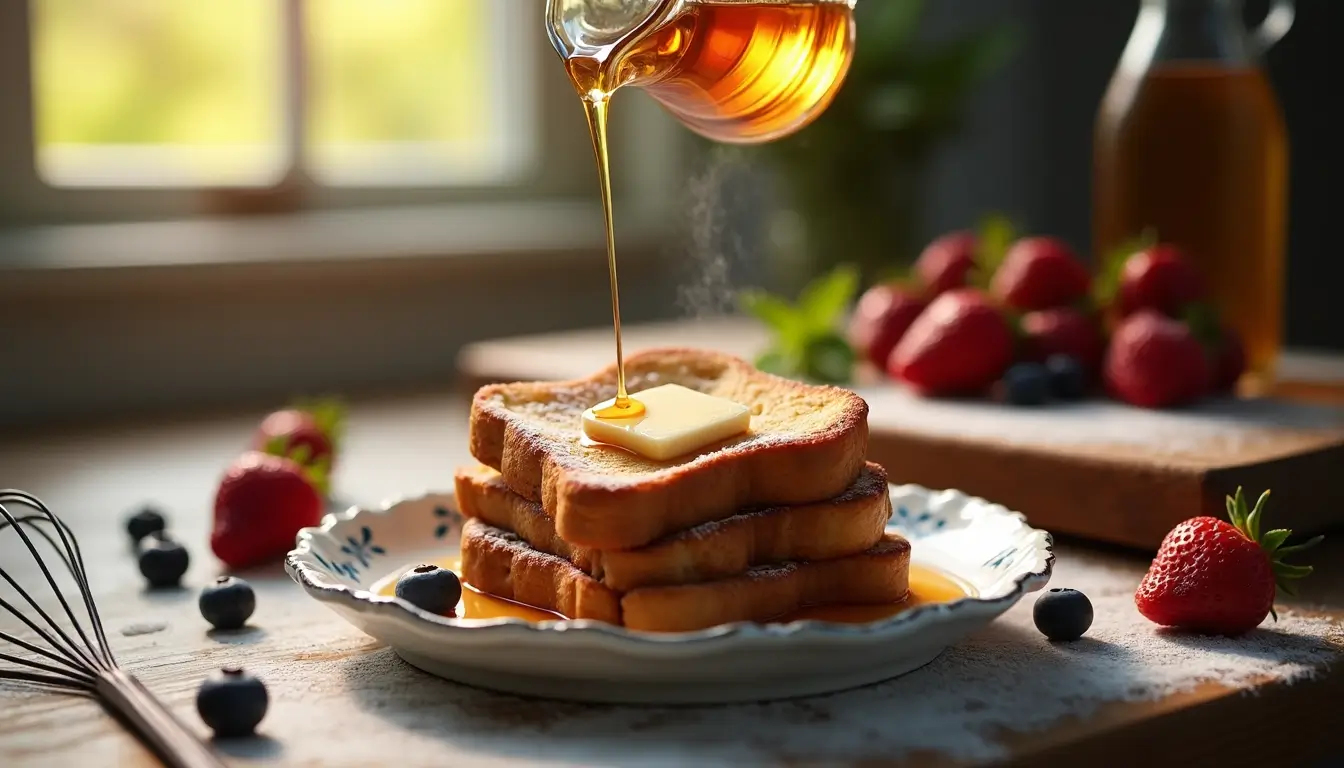
1 thought on “Grandma’s Best French Toast Recipe (With Secret Vanilla Twist)”
Comments are closed.